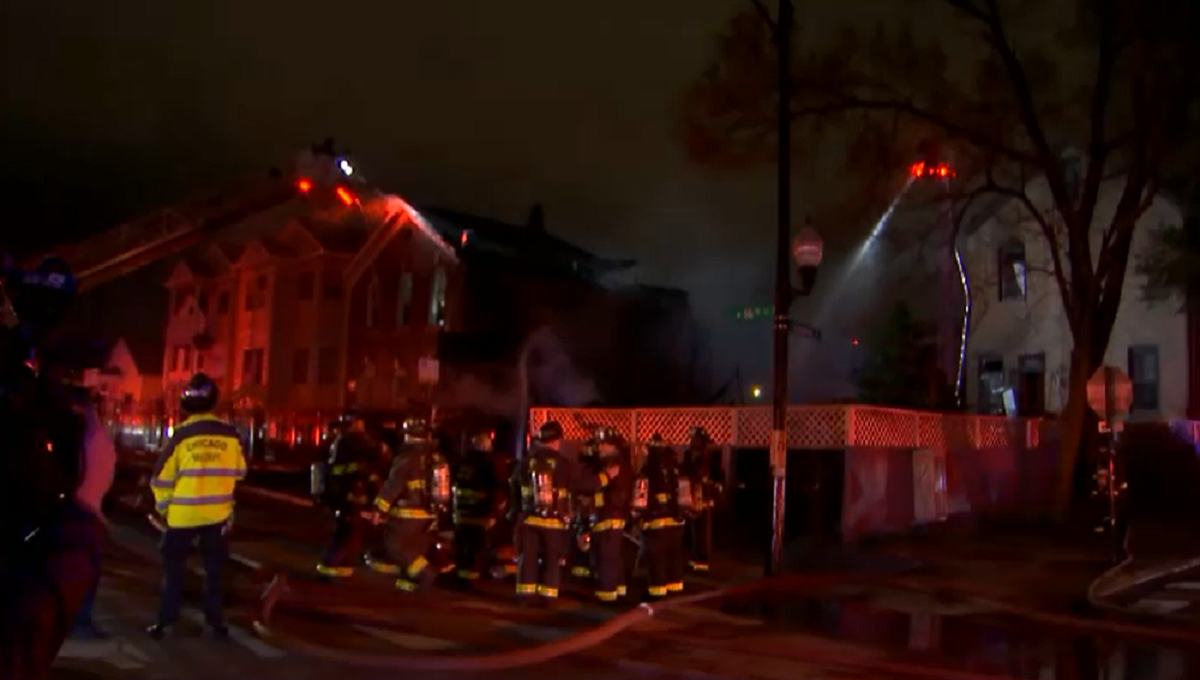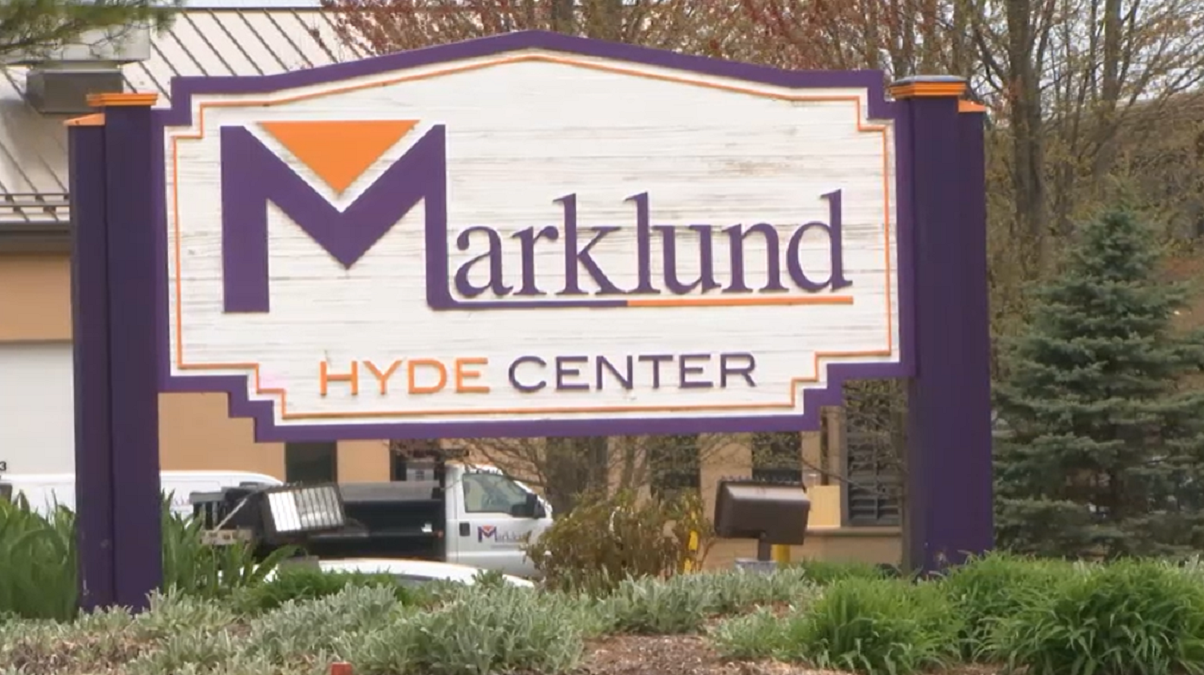From symptom onset to potential time in the hospital, the current health journey for individual coronavirus patients has proven to be fairly different from when the pandemic began, based on a number of factors.
Over the past several months, doctors and health experts have found new ways to treat and diagnose COVID-19 in patients worldwide, leading to the ever-changing nature of the virus' effect on people.
Dr. Phillip Cozzi, medical director of the Critical Care Department at Elmhurst Memorial Healthcare, spoke with NBC 5 to explain how the typical cycle of a coronavirus patient looks at this point in the pandemic.
Who is Most Likely to Contract the Coronavirus?
Cozzi, who has treated hundreds of coronavirus patients, described seeing a wide range of ages both contracting the virus and in the hospital with symptoms.
"I've had opportunity to treat patients from their twenties to their nineties, and everywhere in between," Cozzi said.
Though most people hospitalized for the virus are older and more frail, according to Cozzi, some "very young people" have been among the most severely infected with no difference in symptoms depending on age.
Local
He explained that most people will not know they have been exposed to the coronavirus before seeing physical signs.
"Some unsuspecting person is transmitting the virus unwittingly as 80% of the patients are essentially asymptomatic or have minimal symptoms -- runny nose, stuffiness, a slight loss of taste -- going about their regular day," he said.
Cozzi explained that the infected individual will then have an asymptomatic period that's typically three to four days. After this point, he said patients will likely develop a "mild, clinical syndrome," bringing a cough, low grade fever and body aches.
"A small percentage of the patients progress with a more fulminant clinical presentation, including diarrheal state," Cozzi said. "They may not have dyspnea to where they have a progressive respiratory syndrome."
According to the Mayo Clinic, people who have dyspnea, or shortness or breath, will generally describe it as an "intense tightening of the chest, air hunger, difficulty breathing, breathlessness or a feeling of suffocation."
A small percentage of patients will need hospitalization from the coronavirus, Cozzi said, with an even smaller percentage experiencing a more severe case for unknown reasons.
"Those are the unfortunate few," he said. "Typically those individuals have comorbidities. And by comorbidities, that means they have one or two strikes against them. They may be old, frail, have heart disease, diabetes, CLPD. They may have obesity."
If Hospitalized, How is the Virus Treated?
For a typical hospitalized case of coronavirus, Cozzi said patients tend to fight the virus over a period of about three to four weeks from being exposed to recovery.
According to the Chicago-area doctor, the peak of COVID-19 for most patients will likely occur within the second to third week, usually around the 14th day.
"After which the clinical syndrome starts to turn in the right direction, where they will then have less dyspnea, less cough, less oxygen requirements and ultimately being discharged with, or without supplemental oxygen," he said. "After a months' period of time, [they'll] wake up and go about their life prior to recognizing, 'Hey, I feel pretty good.' And they're ultimately then through the clinical syndrome."
For people with a more severe case of coronavirus, Cozzi said they will likely end up in the intensive care unit with "really aggressive" respiratory support, requiring high levels of supplemental oxygen.
He described several ways to treat the most severe cases of COVID-19, one using positive airway pressure, or PAP therapeutics.
"Patients will wear a modified scuba mask that blows air down the back of their throat, inflating their lungs and an even smaller percentage of patients require intubation or placement of a breathing tube between their vocal cords into their trachea to support those patients on a mechanical ventilator," Cozzi said.
However, Cozzi explained there is debate in the medical field over whether or not these devices could infect more people in the surrounding environment, so Elmhurst Hospital tends to avoid usage.
Depending on a patient's symptoms, he said doctors may use other respiratory treatments such as high flow nasal cannula, BiPap machines, helmet ventilation and intubation on a mechanical ventilator to achieve the desired oxygen saturation in the 90s.
He added that these treatments are the standard of care for the virus at this point in the pandemic but have changed since spring and are likely to continue changing as researchers gain more insight.
Though most patients emerge from the breathing machines to an eventual recovery, according to Cozzi, many require a prolonged treatment on the mechanical ventilator.
Neither Azithromycin nor Hydroxycloroquine, medications used at the start of the pandemic, have subsequently proven significant benefit, according to Cozzi. Although evidence has grown to show other medications proving success in COVID-19 treatment such as Dexamethasone and Remdesivir.
The Food and Drug Administration last month approved Gilead Sciences' antiviral drug Remdesivir as a treatment for the coronavirus, which doctors were able to use since May for "emergency use."
For many patients with respiratory difficulties at the hospital, Cozzi said he will likely provide a five-drug cocktail to aid in breathing, prevent blood clots and reduce inflammation.
Cozzi added that there are also antibody infusion strategies with convalescent plasma to aid in immunity to the virus, but there is still research being studied as to the effectiveness.
Though a small amount, some patients are unable to find successful treatment of the virus.
"There's an even smaller percentage of the entirety of the exposed population who die, who cannot be supported through their critical illness and may suffer from respiratory failure or one of the many potential complications of critical care," Cozzi said.
If Not Hospitalized, How Should People Treat the Virus?
For people who are home with the virus, Cozzi encouraged quarantining from others to avoid spreading, along with taking Tylenol or Advil for body aches and headaches.
"They need to rest, keep themselves well hydrated, keep their nutrition up," he said. "They need to eat, get sleep, do all the things that you typically do when you have a viral infection."
For patients who need to be hospitalized a second time due to coronavirus symptoms, Cozzi said doctors will continue the same supportive therapies previously received.
He said that doctors will also ask many hospitalized patients to "prone," meaning lying on their stomach while in bed to increase oxygenation.
If a patient is at home with respiratory issues, Cozzi said doctors may ask an individual to self-prone for a couple hours several times a day.
What Are Possible Complications from COVID-19 or Its Aftermath?
"Whether or not a small portion, a small fraction, of the patients will ultimately have a more long-term clinical syndrome is in the stars," Cozzi said.
Based on the patients he has seen, Cozzi said he believes a small percentage, possibly less than 1%, who contracted the coronavirus are left with significant lung injury. However, he added that a "significant portion of patients" will develop thrombotic disorders.
"This is a feared complication of the virus," he said.
Thrombosis, which Johns Hopkins refers to as blood clots blocking blood vessels, from COVID-19 typically includes deep vein thrombosis and pulmonary embolism.
According to the Centers for Disease Control and Prevention, deep vein thrombosis occurs when a blood clot forms in a deep vein, often in the lower leg, thigh or pelvis.
Individuals with pulmonary embolism will typically show difficulty breathing, irregular heart beat, chest pain, coughing up blood and very low blood pressure, the CDC explained.
Some patients can also be left with fibrotic injury, which, according to Cozzi, may require a longer recovery time.
Mayo Clinic described pulmonary fibrosis as a disease occurring when lung tissue becomes damaged or scarred. As tissue thickens, lungs typically do not work properly and people become short of breath.
Symptoms of pulmonary fibrosis generally include dyspnea, dry cough, fatigue, unexplained weight loss, aching muscle joints, and widening and rounding of fingers or toes.
"I will say that the majority of the patients I'm seeing in follow-up in the clinic have a slow but consistent resolve of their oxygen requirements, their dyspnea and the entirety of their clinical central," he said.
What Has Been the Biggest Challenge?
"The biggest challenge for me personally has been caring for the extraordinary numbers of patients with this disease state," he said. "So that the workload for the healthcare providers is much more than we're used to. And also there's an emotional stress that we're witnessing. People die in numbers that we're simply not used to."
Cozzi described his typical work environment as "normally really pleasant," though many would assume working in an intensive care unit would be a rather stressful atmosphere.
"It's normally nice, young, happy and normal educated people doing a good job, caring for people," Cozzi said. "The work environment itself is really stressed when the acuity of the illness is so high."



